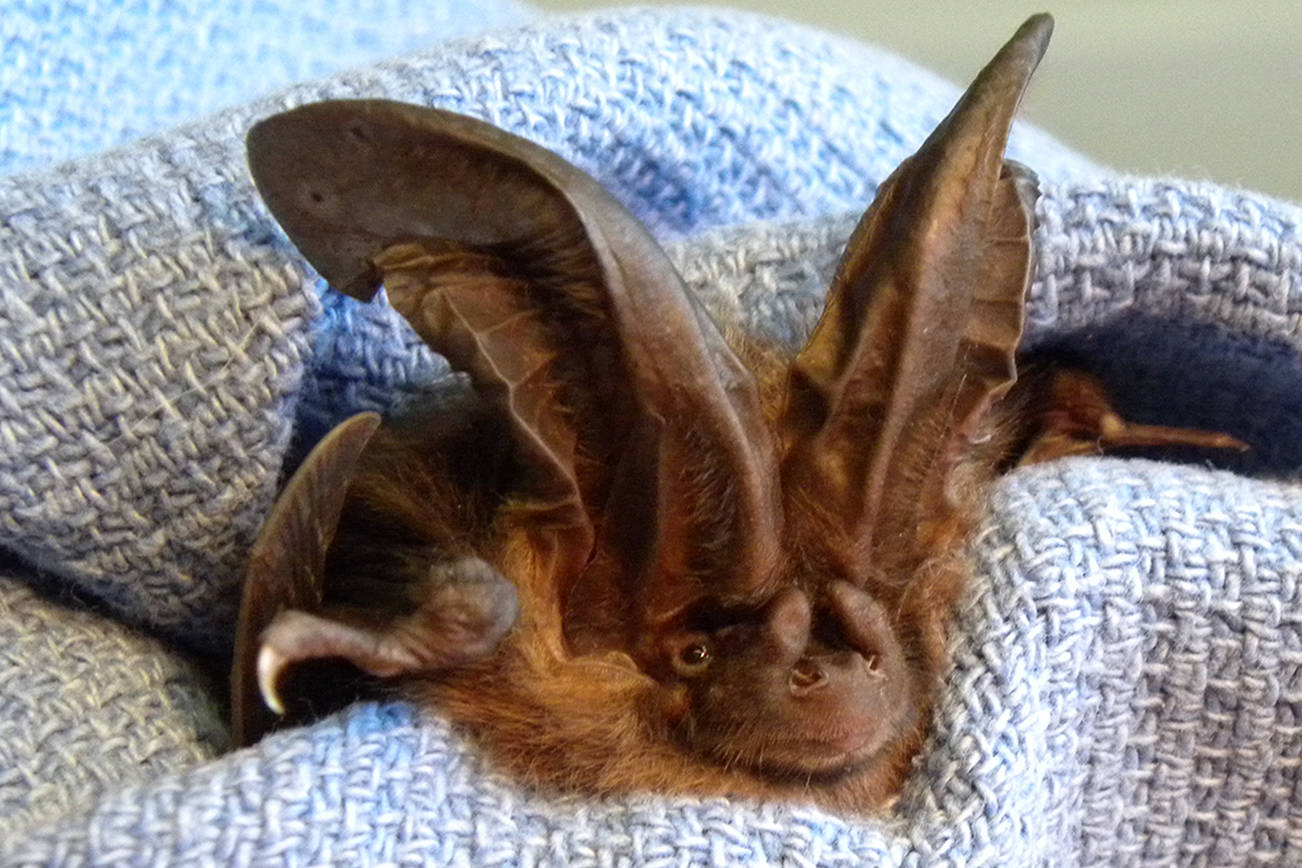Submitted by Kwiaht
What do our Northwest bats eat?
The simple answer is insects, but that is too general. There are more than a million species of insects on earth, and nearly 100,000 of them live in North America. Humans regard some insects as pests, some as beneficial, some, like butterflies, as beautiful, and most of them as simply irrelevant. Most people assume that bats prefer to eat the most annoying insects, such as mosquitoes; but do bats share our perspective?
Imagine the challenges faced by hungry bats. Our island bats are good at targeting and intercepting insects on the wing, but staying aloft takes energy. Bats need to maximize the number of calories they can collect per minute of flight time. This may mean seeking a few large buttery insects such as moths, or large swarms of smaller, less calorie-rich insects such as midges and mosquitoes. Swarms of large greasy insects such as termites, are best of all, but they cannot always be found. Even on a warm summer evening flying insects are not evenly distributed everywhere. One night there is a swarm of newly-emerged mayflies over a pond, but the following night the action is in a wet hayfield, or a newly-turned garden, or the leafy canopy above a rotting log filled with amorous termites.
Different species of insects hatch and mate at different times and places, so a clever bat could try to anticipate where and when to find them. This is complicated by the fact that the seasonal timing of insect swarms is influenced by weather and varies from year to year. An older bat may remember a beach where salt-water midges often swarmed in previous years, but she will find it difficult to predict which night to return to it in future years. Perhaps she checks that beach every night at about the same time of year, but that is a lot of flight time.
Understanding these challenges leads to additional questions. Do our bats communicate hunting knowledge to each other? Do younger, inexperienced bats follow older bats to see where they hunt? Or is it every bat for herself? At this stage, we really do not know.
One of the emerging challenges for island bats will be adapting to the effects of climate change on the timing of prey species. Some insect species move farther north as the Salish Sea warms, to be replaced by insects that our islands’ bats have never before hunted. A better understanding of how bats learn when and where to hunt would help us anticipate bats’ ability to adapt to a rapidly changing prey field.
Like marine biology, bat research depends profoundly on technology. Humans cannot see or hear what bats are doing without electronic devices such as high-speed infrared cameras and ultrasound recorders. Software capable of unscrambling bats’ voices and identifying individual bats in a feeding frenzy over a marsh has only existed since 2009. New-generation software using cluster analysis to identify thousands of bat calls in minutes is indispensable to Kwiaht’s network of five bats “listening posts” around San Juan County. On a typical summer evening, Kwiaht’s Bat Grid will record about 2,000 bat flyovers, representing nine species of bats.
One unmistakable finding of Kwiaht’s Bat Grid is that a lake, pond or woodland clearing is visited by different bat species at different times of the year. Some bats species are more mobile (and potentially more choosy about what they eat) than others, and only show up for a week or two at a time, while others are present nearly year-round, varying only in numbers. Large nightly variations in numbers presumably reflect weather conditions as well as insect abundance (which may also be influenced by night weather). Much nightly variation is not correlated with the weather and may reflect bats’ predictions of where feeding is best, or other factors such as the presence of owls that hunt bats.
These dense data sets still lack one very important variable: the target insect species. How can researchers tell what the bats circling over a particular marsh one night are actually eating?
The conventional solution has been to set out insect traps to sample the prey field then trap some bats and detain them until they defecate. Fecal pellets consists of finely chewed insect exoskeletons, some of which can be identified by a meticulous, sharp-eyed entomologist with a microscope. Over the past few years, however, a small number of laboratories including Kwiaht’s lab have begun using the residual traces of DNA in guano to identify what insects are eaten, and sometimes the bat species as well.
Kwiaht researchers also collect guano from beneath known bat roosts, which is much less time-consuming and significantly safer for bats than trapping. Collection sites include bat houses constructed by Kwiaht for displaced maternity colonies.
The latest development in bat research technology is a smartphone microphone and app that makes it possible to do point and shoot species identification of bats in flight. This makes it possible to identify bats while observing them hunting a swarm of insects, without trapping or handling any bats. It will still be necessary to trap some of the insects. The next phase of bat research, still in development, involves identifying insects acoustically. Many insects also echolocate, or have distinctive flight sounds that could be recorded and decoded!
Watch for announcements next spring and summer of Kwiaht “bat viewing nights” when researchers will demonstrate the new technology for identifying bats in real time on the fly, as they eat swarms of insects. And ask Kwiaht about less expensive versions of this technology that can convert your smartphone into a bat detector. Batting can be as much fun as birding, if you have the technology to eavesdrop on bats and identify them.



